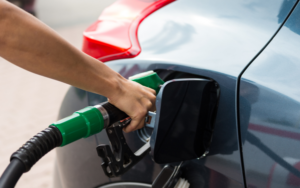
The government plans for the freely available data to be used by private companies to create similar tools to the ones consumers use to compare the price of flights, energy bills and insurance. It even hopes that online mapping tools and in-car navigation systems will overlay the price of fuel in the area for users to see on the move. Decisions are yet to be made on who will manage and process the data or when the new rules will come into force.
Major retailers – including Tesco, Sainsbury’s, Morrisons and Asda – have been sharing petrol price data voluntarily on a daily basis since August 2023, but the new rules would make the sharing compulsory and the figures more up-to-date.
Why are the new rules being introduced?
The government expects the accessibility of pricing data to advance competition in the sector and push down prices. The changes come after the Competition and Markets Authority (CMA) reported in May that “weakening retail competition is contributing to higher prices for drivers at the pumps”. Motoring groups have also accused retailers of not passing on falls in wholesale prices to customers. The accusation centres on the idea that prices at the pump go up when petrol stations see their costs increase, but prices do not fall sufficiently when wholesale costs fall. The CMA has claimed that failure to pass on previous cost savings led to UK motorists paying around £900 million more for fuel in 2022. The average price of a litre of petrol has this month hit its lowest point since October 2021, in part due to falling wholesale costs, though it could be argued that voluntary data sharing over the last year by major retailers has had an affect.
In the short term, the data should also help drivers find the cheapest fuel in their area. The Department for Energy Security and Net Zero (DESNZ) claimed that an Australian scheme launched for similar reasons in Queensland has reportedly helped motorists save an average of £49 per year. This would equate to around 3p per litre. Access to up-to-date pricing data should give drivers the opportunity to shop around online for the best fuel price without having to drive from one petrol station to another. It could also give some context to the price you see at the pump when you fill up your car.
There are already sites such as Petrol Prices that can show you the price of fuel in your local area using the data voluntarily provided by certain companies, however, the data has a lag and can often be around a day old. You simply enter your postcode and compare the prices offered by the various petrol stations in your chosen area. If you are planning a long journey, you could also check how much fuel will cost along the route. Keep in mind that this information can be up a day old and does not include every retailer, but that may change in the future.